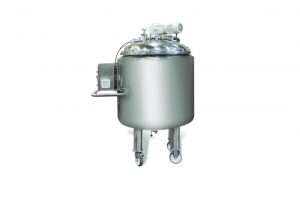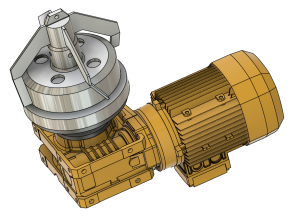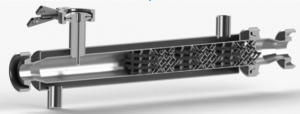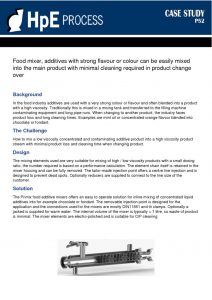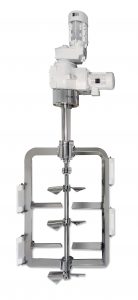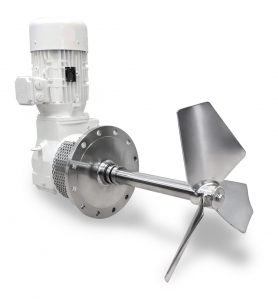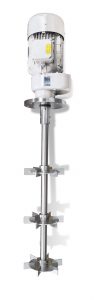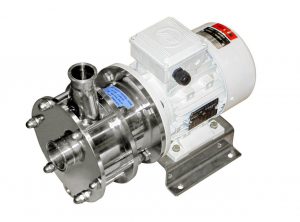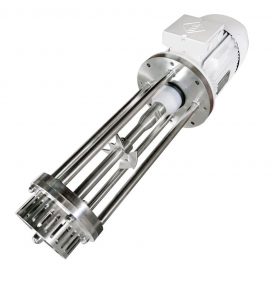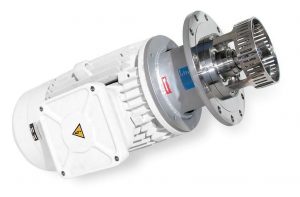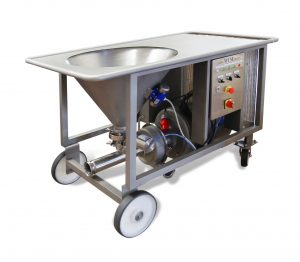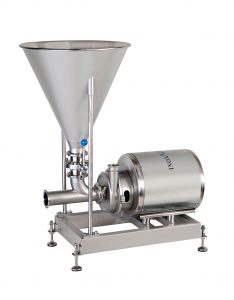Hygienic Mixers
The HpE portfolio now includes hygienic mixers, for the Food, Chemical and Pharmaceutical industries. Working with reliable and established partners allows for tailor-made solutions. It is equally important to constantly improve mixing calculation tools and maintain consistent experience.
Mixers Range :
Mixing Skid
Characteristics
- Speed control of mixing elements
- Temp monitoring & control
- Tank pressure monitoring & control
- Feed and supply pump control
- CIP Control
- Automated valve sequencing
For more information on hygienic mixers contact us on +44(0)113 252 6712
Magnetic Mixer – Magmix
MagMix comprises an in-tank stainless steel mixing head containing high-power rare-earth magnets. The mixing head is magnetically coupled to a matching external driving magnet powered by Electric or Air Motor and Gearbox assembly. The Mixing Head can be fitted with a range of Impellers to suit many applications
MagMix is mounted on a custom designed bearing and vessel pad which can be welded or bolted versions can be offered so this can fit into the base of virtually any process vessel
Static Mixer
Static hygienic mixers and heat exchangers are solutions for mixing, cooling, frothing, dispersion and pasteurisation of foods and beverages.
Within the food industry aspects as CIP cleaning, smooth and / or polished surfaces and sanitary fittings, are of importance. Therefore, by applying static mixing elements and by the achieved increased product velocity alongside the inner wall of the tube. The applied mixing element with respect to an empty tube after CIP Cleaning, provides a considerably cleaner result. Finally the subsequently measured bacterial count is minuscule.
In-line mixers introduce or remove heat from a product stream without the need for plate heat exchangers (which cannot work on high viscosity products and are difficult to clean) or excessively long shell and tube units.
- The mixing elements are fully welded and electro-polished making them the cleanest available
- Tailor made units
- Supplied with or without heating/cooling jackets
- Up to 4 injectors in a single housing
- Intelligent design and pulse free flow allow us to make shorter mixers, minimising waste
Vertical agitator: Tandem
Characteristics
Specific sealing system in accordance with the application:
- Single mechanical seal, dry turn, or dual cartridge
- Level of finish: Industrial / Foodstuff / Sanitary
- Anchor flange: Square / DIN 2576 / IEC type
- Parallel geared motor
- Interchangeability of agitator components
For more information or lead times contact our sales department click here
Side Entry Mixer
Characteristics
- DIN 2576 anchor flange
- Level of finish: foodstuff / sanitary
- Gearbox with high-performance helicoidal gears
- Single mechanical seal sealing system
- GAMMA / MARINE propeller
- Simplicity of parts
Dual Movement Agitator
Characteristics
- Level of finish: sanitary
- IEC anchor flange
- Coaxial gears gearbox
- Interchangeable agitation components
- Easy assembly/dismantling
Inline Mixer
Characteristics
- Single or Dual cartridge mechanical seal
- Adjustable head and propeller configuration
- DIN 11851 connections
- Adjustable discharge direction
- High degree of hygiene
- External protection against environmental oxidation
For more information click learn more below.
Vertical Mixer
Characteristics
- Anchor flange DIN 2576
- Adjustable head and propeller configuration
- Hugh degree of hygiene
- Interchangeable heads
For more information click learn more below.
Bottom Entry Mixer
Characteristics
- DIN 2576 PN10 Anchor flange
- Adjustable head and turbine design
- High degree of hygiene
- Interchangeable heads: slotted, sieved or perforated
- Easy assembly / dismounting
- Double mechanical seal
For more information click learn more below.
Solid Liquid Emulsifier
Characteristics
- Dual Cartridge Mechanical seal
- High degree of hygiene
- Quick dismantling with CLAMP connections
- Manual butterfly valve
- External protection against environmental oxidation
- Assembled over a transportable table
- Mechanical seal cooling system through thermosiphon vessel
- Control Panel
- Level of finish: matte exterior (sandblasted) / inner polish (chemical polished + brushed)
For more information click learn more below.
Solid Liquid Mixer
Characteristics
- Single Mechanical Seal S/S/EPDM
- Level of finish: Sanitary
- High hygiene degree
- Quick dismantling with clamp connections
- Manual butterfly valve
- External protection against environmental oxidation
For more information click learn more below.

